 sales@loadcellsensor.com
sales@loadcellsensor.com


Unlocking Precision: How Multi-Axis Load Cells Revolutionize Weight Measurement in Modern Technology
In today's fast-paced technological landscape, precision in weight measurement is paramount across various industries, from manufacturing to healthcare. Multi-Axis Load Cells have emerged as a revolutionary solution, offering unparalleled accuracy and versatility in weight sensing. According to a recent market analysis by Markets and Markets, the global load cell market is projected to reach $1.5 billion by 2026, spurred by the increasing demand for advanced measurement technologies. Multi-Axis Load Cells stand out in this market due to their ability to measure forces along multiple axes simultaneously, enhancing data integrity and operational efficiency. As industries continue to prioritize precision in their applications, the adoption of Multi-Axis Load Cells is expected to grow significantly, revolutionizing the way weight measurement is approached in modern technology.
Read more »
 By:Isabella - November 14, 2025
By:Isabella - November 14, 2025

Understanding the Impact of 3 Axis Force Sensors on Modern Robotics and Automation
The integration of 3-Axis Force Sensors is revolutionizing the landscape of modern robotics and automation, enhancing precision and efficiency across various applications. According to a report by MarketsandMarkets, the global market for force sensors is projected to grow from $1.1 billion in 2020 to $1.8 billion by 2025, driven largely by advancements in robotics, automotive testing, and wearable technology. These sensors play a crucial role in providing real-time feedback on the forces applied to robotic joints, enabling adaptive control and enhancing the robot's ability to interact safely with their environment. With manufacturers increasingly prioritizing automation to improve productivity, the implementation of 3-Axis Force Sensors is not only imperative for maintaining quality control but also for advancing the capabilities of robotic systems in complex tasks. As industries navigate this technological shift, understanding the impact and potential of 3-Axis Force Sensors becomes essential for fostering innovation in robotics and automation solutions.
Read more »
 By:Isabella - November 11, 2025
By:Isabella - November 11, 2025
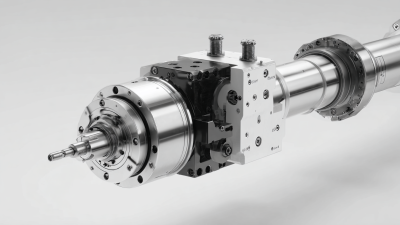
Understanding the Importance of Shaft Torque Sensors in Modern Engineering Practices
In contemporary engineering practices, the significance of precise measurements cannot be overstated, particularly when it comes to the performance and efficiency of machinery. One critical component that plays a pivotal role in this area is the Shaft Torque Sensor. By accurately measuring the torque transmitted through a shaft, these sensors enable engineers to monitor and optimize the performance of various systems, from automotive applications to industrial machinery. The ability to gather real-time data on torque not only aids in diagnosing potential issues before they escalate into costly repairs but also enhances the overall safety and reliability of mechanical operations. As industries increasingly adopt automation and smart technologies, the relevance of Shaft Torque Sensors becomes even more pronounced, marking them as essential tools in the pursuit of innovation and operational excellence. Understanding the importance of these sensors paves the way for advancements in both engineering design and application, ultimately leading to improved productivity and sustainability in modern engineering practices.
Read more »
 By:Isabella - November 10, 2025
By:Isabella - November 10, 2025
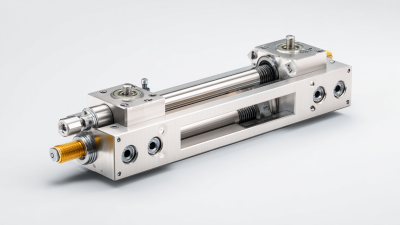
Understanding Inline Load Cells: Revolutionizing Weight Measurement in Modern Industries
In the rapidly evolving landscape of modern industries, accurate weight measurement stands as a cornerstone for operational efficiency and quality control. The Inline Load Cell has emerged as a game-changing technology, enabling real-time weight monitoring directly within production processes. According to a recent market report by Grand View Research, the global load cell market is projected to reach USD 4.64 billion by 2025, underscoring the growing demand for precise and reliable weight measurement solutions. As industries such as manufacturing, pharmaceuticals, and logistics increasingly embrace automation, Inline Load Cells provide not only improved accuracy but also significant enhancements in speed and integration capabilities. This innovative approach is poised to revolutionize how businesses manage weight metrics, offering a robust solution to meet the escalating demands of quality assurance and regulatory compliance in various sectors.
Read more »
 By:Sophia - November 7, 2025
By:Sophia - November 7, 2025
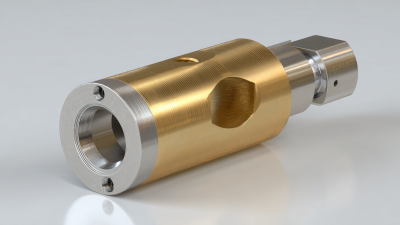
Understanding the Benefits of Through Hole Load Cell for Accurate Measurements
Accurate measurements are crucial in various applications, from industrial processes to laboratory experiments, and selecting the right measurement tool can significantly impact the reliability of data collected. Among the myriad of measurement instruments available, the Through Hole Load Cell stands out due to its unique design and functionalities. This type of load cell is specifically engineered to provide precise force measurements while allowing for easy integration into existing systems. Its innovative through-hole design not only facilitates unmatched accuracy but also simplifies installation, making it an ideal choice for engineers and technicians alike. In this article, we will delve into the benefits of using Through Hole Load Cells, exploring why they are increasingly favored in settings that demand both accuracy and efficiency. From understanding their operational principles to assessing their practical applications, this comprehensive guide aims to equip readers with valuable insights for leveraging Through Hole Load Cells to enhance measurement quality.
Read more »
 By:Sophia - November 4, 2025
By:Sophia - November 4, 2025
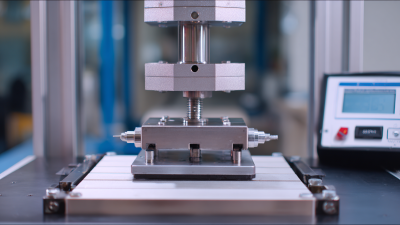
Understanding the Science Behind Compression Load Cells: Optimizing Precision in Measurements
In the realm of industrial measurement technology, the importance of accuracy cannot be overstated. Compression load cells, pivotal components in various applications, have shown significant advancements in precision engineering, with recent reports indicating that the global load cell market is projected to reach $1.9 billion by 2026, reflecting a compound annual growth rate (CAGR) of 4.5%. These sensors are integral in industries ranging from manufacturing to aerospace, where the need for precise weight and force measurements is critical for operational efficiency and safety. Understanding the science behind compression load cells is crucial for optimizing their performance and ensuring accuracy in measurements. As manufacturers continue to innovate, leveraging advanced materials and technologies, the potential for improved precision and reliability in force measurement will only increase, making it essential for practitioners to stay abreast of these developments.
Read more »
 By:Isabella - October 27, 2025
By:Isabella - October 27, 2025
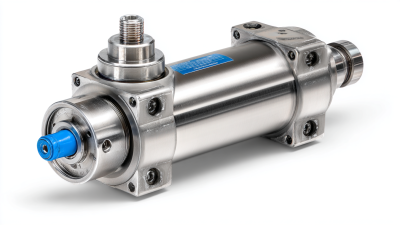
Understanding the Science Behind Torque Load Cells: Applications and Innovations
In the realm of force measurement technology, torque load cells stand out as critical instruments that facilitate accurate and reliable assessments of torque in various applications. These devices operate on the principle of converting the mechanical force exerted by a rotating object into an electrical signal, enabling precise quantification of torque levels. The importance of torque load cells spans across multiple industries, from automotive engineering to aerospace, where they play a pivotal role in quality control, testing, and research and development. Innovations in torque load cell design, such as enhanced sensitivity and miniaturization, have further propelled their utility, allowing for more straightforward integration into complex systems and devices. This article delves into the science behind torque load cells, exploring their fundamental principles, diverse applications, and the latest technological advancements that continue to shape their evolution in modern engineering practices.
Read more »
 By:Isabella - October 26, 2025
By:Isabella - October 26, 2025

Innovative Applications of Compression Force Sensors in Smart Manufacturing Technologies
In the realm of smart manufacturing technologies, the integration of advanced sensors plays a pivotal role in enhancing efficiency and precision. Among these, the Compression Force Sensor stands out as a critical component that enables manufacturers to monitor and control processes in real time. These sensors are designed to measure the amount of force applied during various manufacturing operations, providing valuable data that can be used to ensure product quality, optimize production lines, and improve overall operational performance. This innovative application of compression force sensing technology not only supports the automation of manufacturing processes but also facilitates the adoption of Industry 4.0 practices. As industries strive for smarter, more connected solutions, understanding the multifaceted applications of Compression Force Sensors becomes essential for leveraging their capabilities to achieve sustained competitive advantages in a rapidly evolving market landscape.
Read more »
 By:Sophia - October 23, 2025
By:Sophia - October 23, 2025
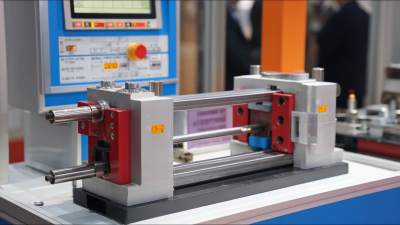
Unlocking Industry Potential with Strain Gauge Load Cells at the 2025 China Import and Export Fair
As industries continue to evolve and seek innovative solutions to enhance performance and efficiency, the 2025 China Import and Export Fair presents a significant opportunity for the introduction of advanced technologies, particularly the Strain Gauge Load Cell. This pivotal event, marking the 138th session of the fair, will showcase cutting-edge measurement technologies that are essential for various sectors, including manufacturing, construction, and transportation. By harnessing the capabilities of Strain Gauge Load Cells, businesses can unlock enhanced precision in load measurement, contributing to improved safety and productivity. The fair will not only facilitate the exchange of ideas and technologies but also encourage collaboration among industry leaders, ultimately driving the potential for growth and adaptation in a rapidly changing marketplace. As stakeholders convene, the spotlight on Strain Gauge Load Cells will underscore their vital role in fostering innovation across diverse industries.
Read more »
 By:Clara - October 21, 2025
By:Clara - October 21, 2025

Exploring Innovations in Rotary Torque Transducers at the 138th Canton Fair 2025
The 138th Canton Fair in 2025 serves as a pivotal platform for showcasing groundbreaking advancements in various industries, with a special emphasis on precision measurement technologies such as the Rotary Torque Transducer. According to recent market analysis, the global torque sensor market is projected to grow at a compound annual growth rate (CAGR) of over 6% from 2023 to 2030, driven by the increasing demand for accurate torque measurements in automotive, aerospace, and manufacturing sectors. Innovations in Rotary Torque Transducer technology not only enhance measurement accuracy but also improve the efficiency of torque applications, presenting significant advantages for industry stakeholders. As manufacturers increasingly adopt smart technologies and automation, the integration of advanced Rotary Torque Transducers into production processes becomes essential for maintaining competitive advantage and optimizing operational performance. The Canton Fair thus highlights the transformative impact these innovations hold for various industries, paving the way toward a more technologically advanced future.
Read more »
 By:Clara - October 19, 2025
By:Clara - October 19, 2025

Transforming Weighing Solutions at the 138th Canton Fair in 2025 with Pancake Load Cell Technology
The 138th Canton Fair in 2025 marks a pivotal moment for the weighing solutions industry, showcasing innovative technologies that enhance accuracy and efficiency. Among these advancements, the Pancake Load Cell technology stands out for its unique design and superior performance. According to a recent industry report by MarketsandMarkets, the load cell market is projected to reach USD 3.9 billion by 2025, driven by increasing demand for precision in various sectors including manufacturing and logistics. The Pancake Load Cell, known for its low height and high capacity, presents a vital solution for optimizing weighing systems in crowded industrial environments. As the fair opens its doors, stakeholders from various industries will gather to explore how integrating such technologies can revolutionize their operations, enhance productivity, and meet evolving market demands.
Read more »
 By:Clara - October 17, 2025
By:Clara - October 17, 2025
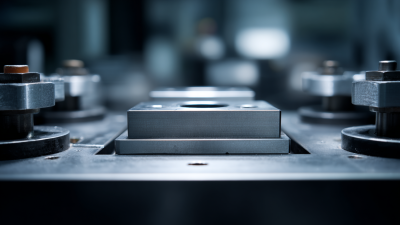
Why Understanding Compression Force Sensors Is Crucial for Modern Industries
In today's rapidly evolving industrial landscape, the importance of precise measurement and control cannot be overstated. Compression Force Sensors play a pivotal role in ensuring operational efficiency and safety across various sectors. According to a market research report by MarketsandMarkets, the global force sensor market is projected to grow from $2.1 billion in 2021 to $3.1 billion by 2026, highlighting a significant upward trend. As industries increasingly embrace automation and data-driven decision-making, the adoption of Compression Force Sensors is expected to rise, driven by their ability to provide accurate real-time data. This technology not only enhances product quality and consistency but also reduces material waste, underscoring its value in manufacturing, healthcare, and automotive applications. Understanding Compression Force Sensors is therefore crucial for organizations aiming to stay competitive and meet the demands of modern markets.
Read more »
 By:Sophia - October 15, 2025
By:Sophia - October 15, 2025

How to Calibrate Your Load Cell 1kg for Accurate Measurements
Calibrating a Load Cell 1kg is essential for ensuring precision in weight measurement across various industries, including manufacturing and laboratory settings. According to a recent report by the International Society of Weighing Technology, accurate load cell calibration can enhance measurement reliability by up to 20%, significantly reducing errors that can lead to costly inefficiencies. Load cells, integral to various applications, function by converting force into an electrical signal, and their accuracy directly influences production quality and compliance with industry standards. Therefore, understanding the calibration process not only optimizes performance but also adheres to regulatory requirements, making it crucial for professionals who rely on these devices for their operations. Implementing proper calibration techniques for your Load Cell 1kg will guarantee that your measurements are consistent, reliable, and in alignment with both organizational goals and safety regulations.
Read more »
 By:Clara - October 12, 2025
By:Clara - October 12, 2025
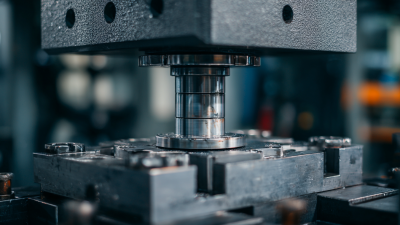
How to Maximize Efficiency in Your Operations with Bending Beam Load Cells
In today's fast-paced industrial landscape, maximizing operational efficiency is a critical goal for businesses striving to enhance productivity and minimize costs. One of the most effective tools for achieving this is the Bending Beam Load Cell, a device that provides precise weight measurements and can significantly improve various processes. By integrating a Bending Beam Load Cell into your operations, you can gain real-time insights into load performance, streamline material handling, and ensure quality control across production lines. This article will explore strategies for leveraging Bending Beam Load Cells to optimize workflow, reduce downtime, and enhance overall system reliability, ultimately empowering organizations to achieve their operational goals and enhance their bottom line.
Read more »
 By:Sophia - October 10, 2025
By:Sophia - October 10, 2025

How to Select the Right Torque Sensor for Enhanced Precision in Industrial Applications
In modern industrial applications, the precision of mechanical systems is paramount, and selecting the right Torque Sensor is crucial for achieving optimal performance. According to a report by MarketsandMarkets, the torque sensor market is projected to grow from USD 421 million in 2020 to USD 595 million by 2025, with a compound annual growth rate (CAGR) of 7.1%. This growth is driven by the increasing demand for automation and the need for high-accuracy measurements in various sectors, including automotive, aerospace, and manufacturing. A Torque Sensor not only measures the torque applied to a rotating object but also provides essential feedback for system monitoring and preventive maintenance. With a multitude of options available in the market, understanding the specific requirements of your industrial application is vital to select a Torque Sensor that enhances operational efficiency, accuracy, and reliability.
Read more »
 By:Clara - October 9, 2025
By:Clara - October 9, 2025

